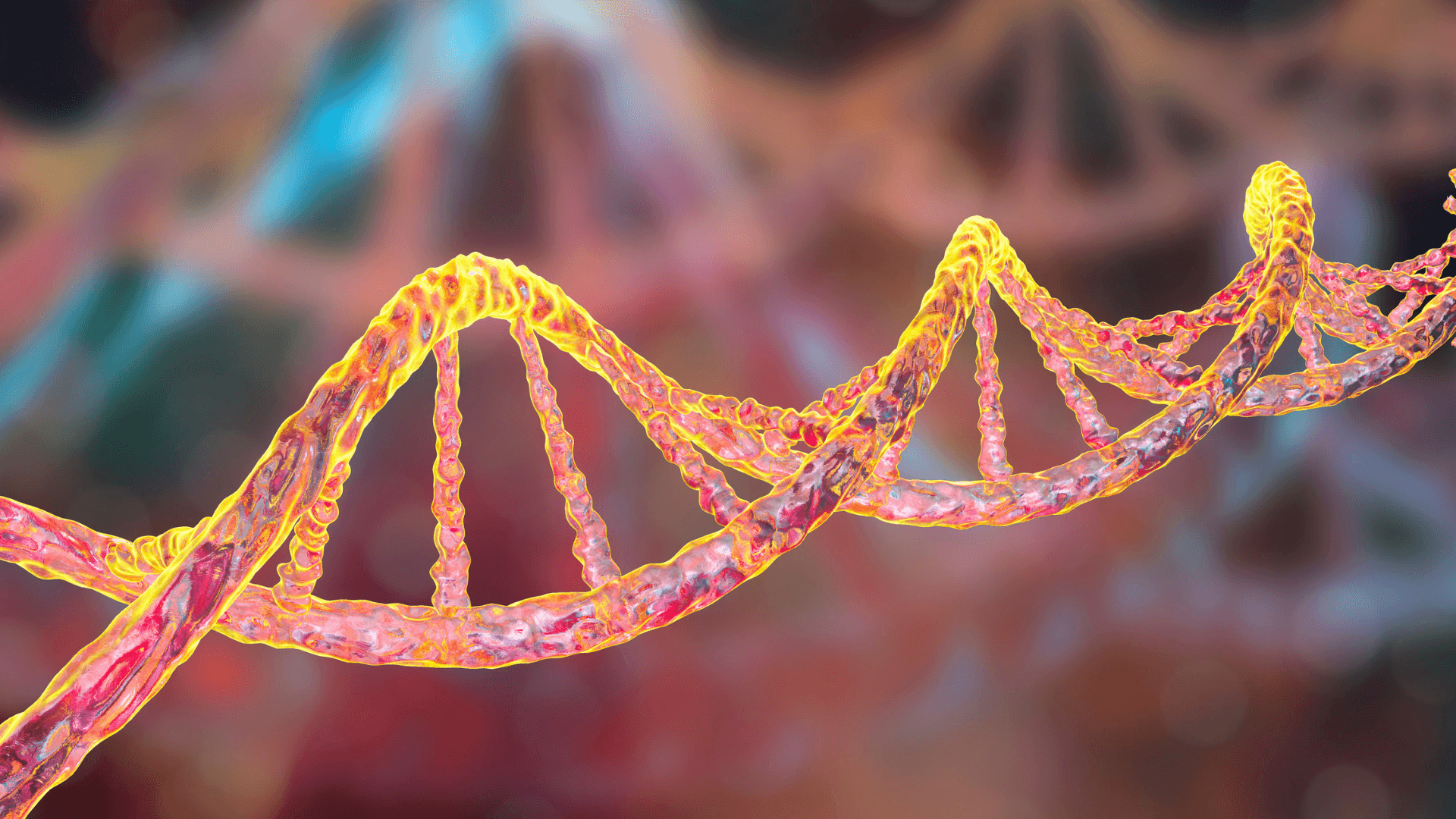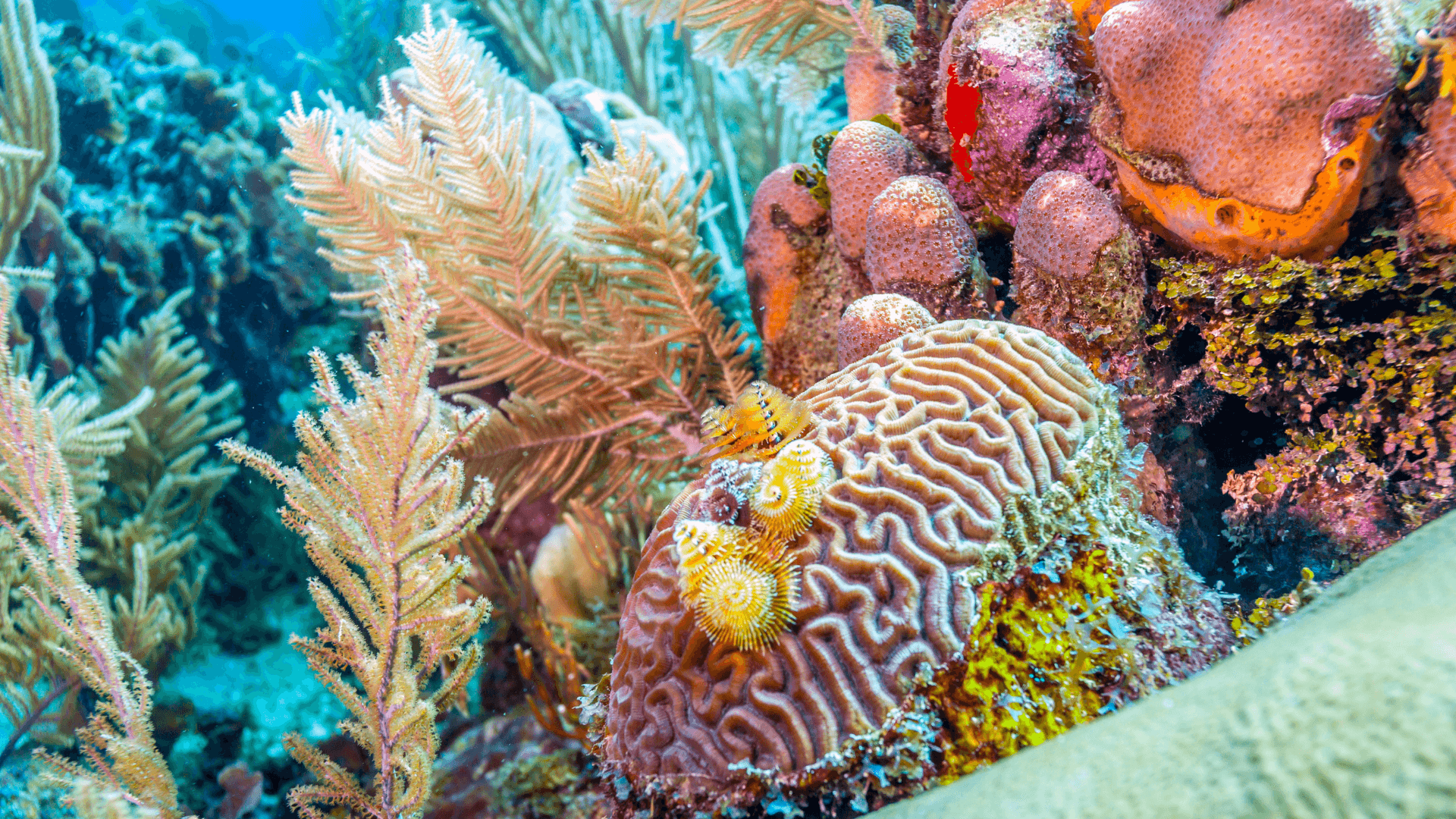Dire Wolves Recreated? Meet the Genetically Modified Animals from Colossal Biosciences
Dire Wolves Recreated? Meet the Genetically Modified Animals from Colossal Biosciences
Dire Wolves Recreated? Meet the Genetically Modified Animals from Colossal Biosciences
Apr 11, 2025
Apr 11, 2025

Cub of the modern dire wolf. Credit: Colossal Laboratories & Biosciences.
Cub of the modern dire wolf. Credit: Colossal Laboratories & Biosciences.
Colossal Biosciences has unveiled modified wolves that resemble the extinct dire wolves. Find out why scientists still debate whether these animals can truly be considered a “revival” of the species.
Colossal Biosciences has unveiled modified wolves that resemble the extinct dire wolves. Find out why scientists still debate whether these animals can truly be considered a “revival” of the species.
On April 7, 2025, Colossal Biosciences announced the birth of three pups named Romulus, Remus, and Khaleesi. They were presented as the first living “dire wolves” in over 10,000 years. But the central question remains: are they truly dire wolves?
According to the company, they were developed via genetic engineering to recover the phenotypic traits of the extinct species. However, the scientific community is still debating the validity of this claim.
The Genetic Engineering Behind the New Pups
The project began with analyzing two dire wolf fossils: a tooth roughly 13,000 years old and an inner-ear bone dated to about 72,000 years ago. Scientists extracted DNA fragments from these specimens and compared them to the genome of modern gray wolves.
This comparison identified around 20 genes linked to traits such as coat color (including the CORIN gene), body size, and skull morphology. After editing these genes, the modified cell nuclei were inserted into dog eggs, carrying the embryos to term via cesarean section. Romulus, Remus, and Khaleesi are now five months old.
Are They Really Dire Wolves?
Experts remain divided. Paleoecologist Jacquelyn Gill argues that without a complete genome of the extinct species, it’s impossible to confirm that these pups are real dire wolves. To her, they are gray wolves with some traits inspired by ancient records.
On the other hand, Colossal’s chief scientific officer, Beth Shapiro, contends that the project’s aim isn’t to clone an extinct animal but to restore its key characteristics. A new preprint seems to support this approach, suggesting that the genetic difference between dire and gray wolves may be smaller than previously thought.
Ethical Questions and Environmental Concerns
Despite the technological breakthrough, the experiment raises many concerns. Experts warn of the risk of public misunderstanding, as people may believe the species has been brought back to life. Furthermore, the environmental impacts of introducing these animals are still unknown, as are the welfare implications for the pups, as they live in isolation without interacting with a natural pack.
Some critics liken the scenario more to Jurassic Park fiction than to realistic conservation science.
Red Wolf Conservation: A More Urgent Application
Meanwhile, Colossal is working on cloning wolves using ancestral red wolf DNA. The red wolf is critically endangered in the United States, with fewer than 20 individuals left in the wild. These “ghost red wolves” aim to boost the genetic diversity of the remaining population.
For scientists like Heather Jay Huson, this type of intervention is far more justifiable and pressing than projects focused on recreating extinct species.
Where Are the Pups Now?
Romulus, Remus, and Khaleesi live on an 800-acre protected reserve under the care of a ten-member team. Their exact location has not been disclosed for security reasons. Currently, there are no plans for public display or breeding.
Researcher Adam Hartstone-Rose intends to study their bone structure and behavior in the future but expresses concern over their social isolation from a natural pack context.
—
Want to dive into all the scientific and ethical details of this recreation? Read the full article here.
On April 7, 2025, Colossal Biosciences announced the birth of three pups named Romulus, Remus, and Khaleesi. They were presented as the first living “dire wolves” in over 10,000 years. But the central question remains: are they truly dire wolves?
According to the company, they were developed via genetic engineering to recover the phenotypic traits of the extinct species. However, the scientific community is still debating the validity of this claim.
The Genetic Engineering Behind the New Pups
The project began with analyzing two dire wolf fossils: a tooth roughly 13,000 years old and an inner-ear bone dated to about 72,000 years ago. Scientists extracted DNA fragments from these specimens and compared them to the genome of modern gray wolves.
This comparison identified around 20 genes linked to traits such as coat color (including the CORIN gene), body size, and skull morphology. After editing these genes, the modified cell nuclei were inserted into dog eggs, carrying the embryos to term via cesarean section. Romulus, Remus, and Khaleesi are now five months old.
Are They Really Dire Wolves?
Experts remain divided. Paleoecologist Jacquelyn Gill argues that without a complete genome of the extinct species, it’s impossible to confirm that these pups are real dire wolves. To her, they are gray wolves with some traits inspired by ancient records.
On the other hand, Colossal’s chief scientific officer, Beth Shapiro, contends that the project’s aim isn’t to clone an extinct animal but to restore its key characteristics. A new preprint seems to support this approach, suggesting that the genetic difference between dire and gray wolves may be smaller than previously thought.
Ethical Questions and Environmental Concerns
Despite the technological breakthrough, the experiment raises many concerns. Experts warn of the risk of public misunderstanding, as people may believe the species has been brought back to life. Furthermore, the environmental impacts of introducing these animals are still unknown, as are the welfare implications for the pups, as they live in isolation without interacting with a natural pack.
Some critics liken the scenario more to Jurassic Park fiction than to realistic conservation science.
Red Wolf Conservation: A More Urgent Application
Meanwhile, Colossal is working on cloning wolves using ancestral red wolf DNA. The red wolf is critically endangered in the United States, with fewer than 20 individuals left in the wild. These “ghost red wolves” aim to boost the genetic diversity of the remaining population.
For scientists like Heather Jay Huson, this type of intervention is far more justifiable and pressing than projects focused on recreating extinct species.
Where Are the Pups Now?
Romulus, Remus, and Khaleesi live on an 800-acre protected reserve under the care of a ten-member team. Their exact location has not been disclosed for security reasons. Currently, there are no plans for public display or breeding.
Researcher Adam Hartstone-Rose intends to study their bone structure and behavior in the future but expresses concern over their social isolation from a natural pack context.
—
Want to dive into all the scientific and ethical details of this recreation? Read the full article here.
On April 7, 2025, Colossal Biosciences announced the birth of three pups named Romulus, Remus, and Khaleesi. They were presented as the first living “dire wolves” in over 10,000 years. But the central question remains: are they truly dire wolves?
According to the company, they were developed via genetic engineering to recover the phenotypic traits of the extinct species. However, the scientific community is still debating the validity of this claim.
The Genetic Engineering Behind the New Pups
The project began with analyzing two dire wolf fossils: a tooth roughly 13,000 years old and an inner-ear bone dated to about 72,000 years ago. Scientists extracted DNA fragments from these specimens and compared them to the genome of modern gray wolves.
This comparison identified around 20 genes linked to traits such as coat color (including the CORIN gene), body size, and skull morphology. After editing these genes, the modified cell nuclei were inserted into dog eggs, carrying the embryos to term via cesarean section. Romulus, Remus, and Khaleesi are now five months old.
Are They Really Dire Wolves?
Experts remain divided. Paleoecologist Jacquelyn Gill argues that without a complete genome of the extinct species, it’s impossible to confirm that these pups are real dire wolves. To her, they are gray wolves with some traits inspired by ancient records.
On the other hand, Colossal’s chief scientific officer, Beth Shapiro, contends that the project’s aim isn’t to clone an extinct animal but to restore its key characteristics. A new preprint seems to support this approach, suggesting that the genetic difference between dire and gray wolves may be smaller than previously thought.
Ethical Questions and Environmental Concerns
Despite the technological breakthrough, the experiment raises many concerns. Experts warn of the risk of public misunderstanding, as people may believe the species has been brought back to life. Furthermore, the environmental impacts of introducing these animals are still unknown, as are the welfare implications for the pups, as they live in isolation without interacting with a natural pack.
Some critics liken the scenario more to Jurassic Park fiction than to realistic conservation science.
Red Wolf Conservation: A More Urgent Application
Meanwhile, Colossal is working on cloning wolves using ancestral red wolf DNA. The red wolf is critically endangered in the United States, with fewer than 20 individuals left in the wild. These “ghost red wolves” aim to boost the genetic diversity of the remaining population.
For scientists like Heather Jay Huson, this type of intervention is far more justifiable and pressing than projects focused on recreating extinct species.
Where Are the Pups Now?
Romulus, Remus, and Khaleesi live on an 800-acre protected reserve under the care of a ten-member team. Their exact location has not been disclosed for security reasons. Currently, there are no plans for public display or breeding.
Researcher Adam Hartstone-Rose intends to study their bone structure and behavior in the future but expresses concern over their social isolation from a natural pack context.
—
Want to dive into all the scientific and ethical details of this recreation? Read the full article here.

Compartilhar em:
Ver Também
Ver Também

Microplásticos são detectados em fluido ovariano: o que isso significa para a fertilidade humana?
Apr 22, 2025

Crise humanitária em Mianmar: milhões precisam de ajuda após terremotos devastadores
Apr 21, 2025

Vida em outro planeta? Gás ligado à vida é detectado no exoplaneta K2-18b
Apr 18, 2025

Lobos terríveis recriados? Conheça os animais geneticamente modificados pela Colossal Biosciences
Apr 11, 2025

Segurança digital e inteligência artificial: soluções e desafios em 2025
Apr 3, 2025

Saúde cardiovascular em comunidades rurais: estudo revela impactos dos fatores sociais
Apr 1, 2025

Calor inesperado marca o primeiro dia da primavera de 2025 no Reino Unido: sinal das mudanças climáticas?
Mar 21, 2025

DeepSeek AI: o chatbot chinês que está sacudindo o mercado global
Feb 7, 2025

Estudo revela que a vida social ativa pode reduzir o risco de demência
Feb 4, 2025

Ano Novo Lunar 2025: a chegada do Ano da Serpente
Jan 30, 2025

Nova hipótese sobre a origem dos dinossauros desafia conceitos tradicionais
Jan 27, 2025

Ambiente potencialmente habitável em Marte é descoberto pelo Perseverance
Dec 20, 2024

As emoções e o corpo humano: conexões milenares nos textos neo-assírios
Dec 20, 2024

Estudo relaciona poluição do ar ao risco de tromboembolismo venoso
Dec 20, 2024

Colapso da plataforma de gelo Conger: alerta para a Antártica Oriental
Dec 20, 2024

Revolução XRISM: novas descobertas sobre buracos negros supermassivos
Oct 15, 2024

Estudo aponta que duplicação do gene AMY1, relacionado à digestão de amido, precede a agricultura
Oct 14, 2024

Nascimentos na UE caem para menos de 4 milhões pela primeira vez desde 1960
Oct 11, 2024

Escavação na Dinamarca revela 50 esqueletos Viking incrivelmente preservados
Oct 10, 2024

Estudo indica maior incidência de asma e rinite alérgica em pessoas nascidas no outono e inverno na Finlândia
Oct 9, 2024

Estudo demonstra semelhanças entre a puberdade de adolescentes da Idade do Gelo e jovens modernos
Oct 8, 2024

Análise de DNA em múmias chinesas de 3.600 anos revela queijo mais antigo do mundo
Oct 7, 2024

Estudo revela estabilidade genética de populações da África Austral por 10 milênios
Oct 4, 2024

Nove lugares míticos que podem ter existido, segundo descobertas arqueológicas
Oct 3, 2024

Como os direitos humanos podem salvar recifes de coral e responsabilizar governos
Oct 2, 2024

Relatório da Carbon Brief aponta que 2024 pode ser o ano mais quente da história
Sep 4, 2024

Clima determina a distribuição de mamíferos, revela estudo da Universidade Estadual da Carolina do Norte
Sep 4, 2024

Estudo sugere que 'hotspots' de fósseis na África distorcem a visão da evolução humana
Sep 3, 2024

Ruído incomum na Starliner de Boeing intriga astronauta da NASA
Sep 3, 2024

Estudo revela que o microbioma humano é altamente individualizado
Sep 2, 2024

Compartilhar em:

Compartilhar em:

Microplásticos são detectados em fluido ovariano: o que isso significa para a fertilidade humana?
Apr 22, 2025

Crise humanitária em Mianmar: milhões precisam de ajuda após terremotos devastadores
Apr 21, 2025

Vida em outro planeta? Gás ligado à vida é detectado no exoplaneta K2-18b
Apr 18, 2025

Lobos terríveis recriados? Conheça os animais geneticamente modificados pela Colossal Biosciences
Apr 11, 2025

Segurança digital e inteligência artificial: soluções e desafios em 2025
Apr 3, 2025

Saúde cardiovascular em comunidades rurais: estudo revela impactos dos fatores sociais
Apr 1, 2025

Calor inesperado marca o primeiro dia da primavera de 2025 no Reino Unido: sinal das mudanças climáticas?
Mar 21, 2025

DeepSeek AI: o chatbot chinês que está sacudindo o mercado global
Feb 7, 2025

Estudo revela que a vida social ativa pode reduzir o risco de demência
Feb 4, 2025

Ano Novo Lunar 2025: a chegada do Ano da Serpente
Jan 30, 2025

Nova hipótese sobre a origem dos dinossauros desafia conceitos tradicionais
Jan 27, 2025

Ambiente potencialmente habitável em Marte é descoberto pelo Perseverance
Dec 20, 2024

As emoções e o corpo humano: conexões milenares nos textos neo-assírios
Dec 20, 2024

Estudo relaciona poluição do ar ao risco de tromboembolismo venoso
Dec 20, 2024

Colapso da plataforma de gelo Conger: alerta para a Antártica Oriental
Dec 20, 2024

Revolução XRISM: novas descobertas sobre buracos negros supermassivos
Oct 15, 2024

Estudo aponta que duplicação do gene AMY1, relacionado à digestão de amido, precede a agricultura
Oct 14, 2024

Nascimentos na UE caem para menos de 4 milhões pela primeira vez desde 1960
Oct 11, 2024

Escavação na Dinamarca revela 50 esqueletos Viking incrivelmente preservados
Oct 10, 2024

Estudo indica maior incidência de asma e rinite alérgica em pessoas nascidas no outono e inverno na Finlândia
Oct 9, 2024

Estudo demonstra semelhanças entre a puberdade de adolescentes da Idade do Gelo e jovens modernos
Oct 8, 2024

Análise de DNA em múmias chinesas de 3.600 anos revela queijo mais antigo do mundo
Oct 7, 2024

Estudo revela estabilidade genética de populações da África Austral por 10 milênios
Oct 4, 2024

Nove lugares míticos que podem ter existido, segundo descobertas arqueológicas
Oct 3, 2024

Como os direitos humanos podem salvar recifes de coral e responsabilizar governos
Oct 2, 2024

Relatório da Carbon Brief aponta que 2024 pode ser o ano mais quente da história
Sep 4, 2024

Clima determina a distribuição de mamíferos, revela estudo da Universidade Estadual da Carolina do Norte
Sep 4, 2024

Estudo sugere que 'hotspots' de fósseis na África distorcem a visão da evolução humana
Sep 3, 2024

Ruído incomum na Starliner de Boeing intriga astronauta da NASA
Sep 3, 2024

Estudo revela que o microbioma humano é altamente individualizado
Sep 2, 2024
